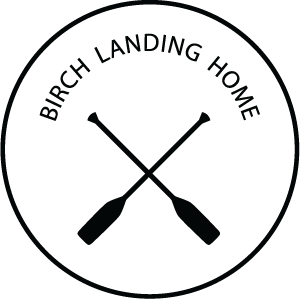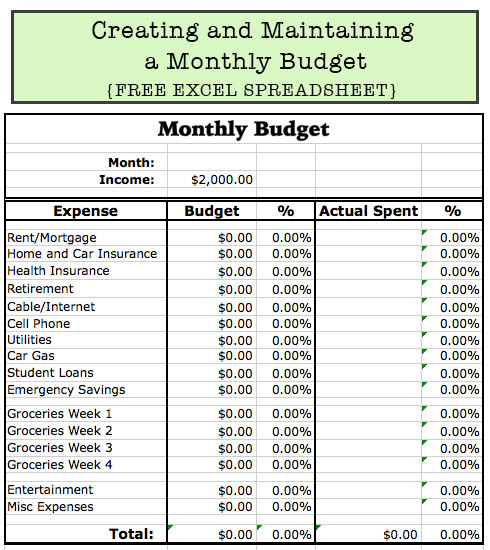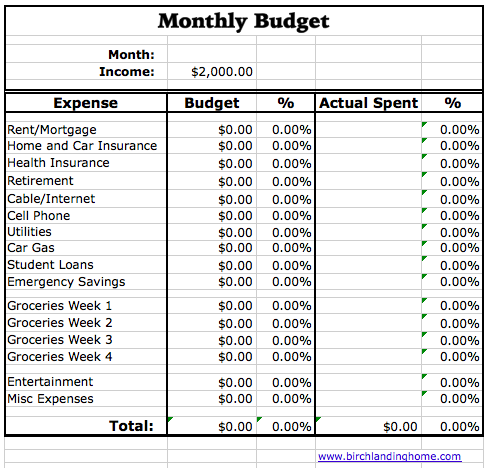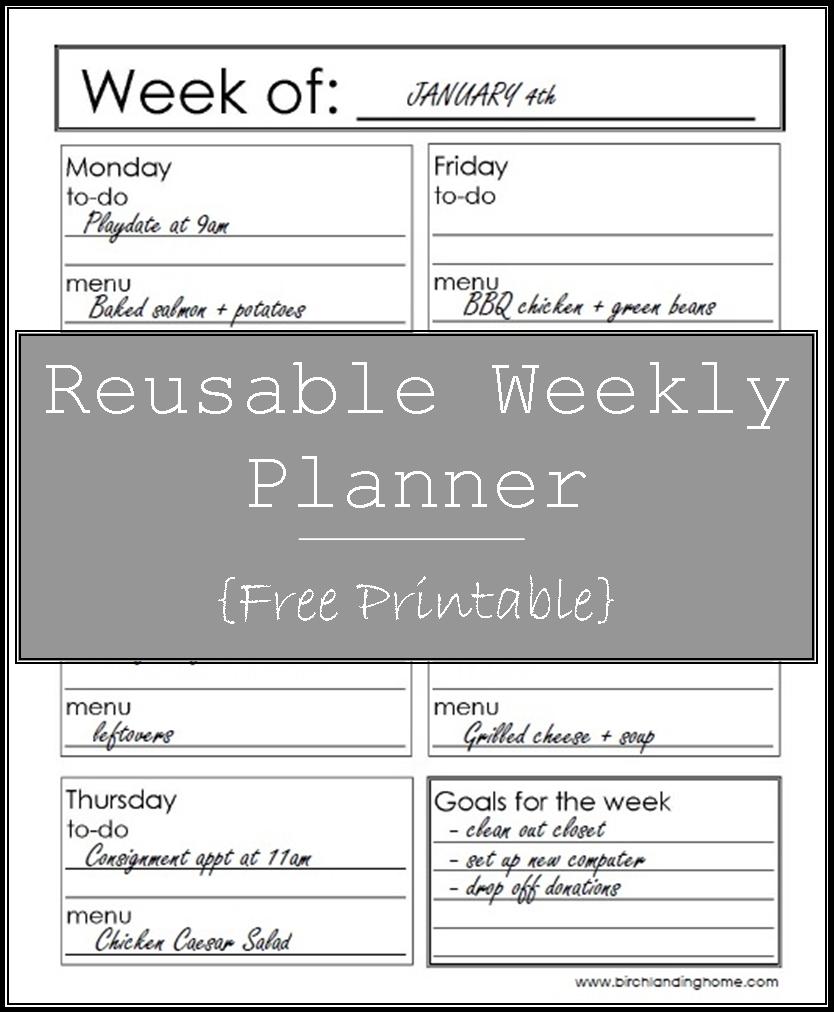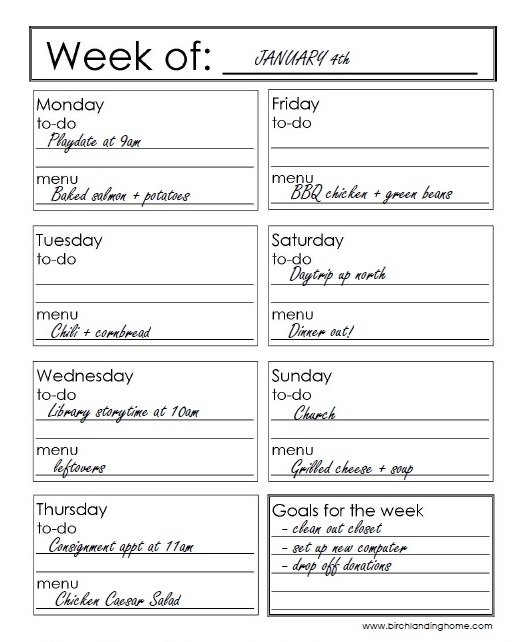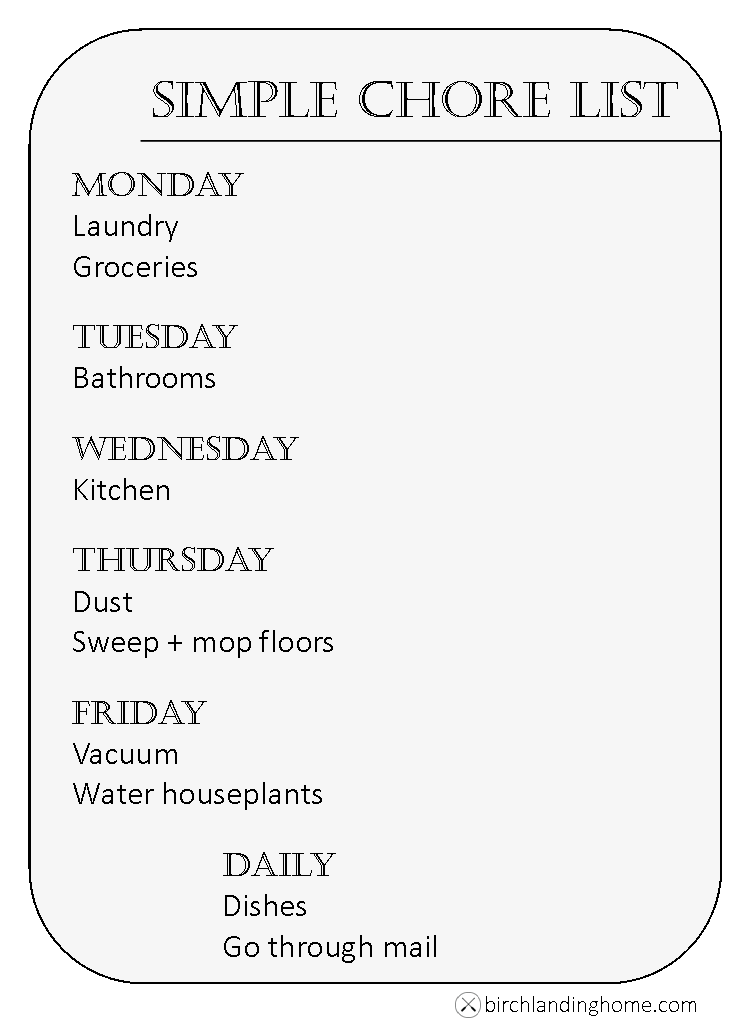Creating and Maintaining a Monthly Budget {Free Excel Spreadsheet}
With baby #2 coming, we've been more mindful than ever about where our money is going and working hard to stay on-budget. By closely keeping track of everything we're getting a better idea on where everything is going and where we can shave off a few dollars. With only one income and a lot of expenses (both expected and unexpected) it can make it very challenging to stay on-budget each month. | This post contains affiliate links. |
Here I've shared a more simplified version of the spreadsheet we use (since we're self-employed we also need to set aside money for quarterly taxes and other expenses). You can change the Expense titles in the left hand column to fit your needs, but I've tried to include all the basic expenses that most young adults will have.
Next replace the monthly Income in the example with your own monthly income (I had to put in a number here as an example so the formulas wouldn't result in error). Then go down the Budget column and fill in what you expect or budget your bills to be. As your bills come in, put in these figures in the Actual Spent column. All of the percentages and totals will auto-update as you fill in the chart.
Over the course of the next few months, you'll see how your expectations (Budget) line up with reality (Actual Spent) and will be able to identify trends. Maybe you spend more for Gas than you thought you did.. or maybe you realize that you spend too much on Entertainment and should put some of that towards other bills...? Keeping track of where everything is going is very eye-opening and will help you stay ahead. The most important thing is writing everything down and sticking to it!
In the event the doing an Excel spreadsheet isn't your thing, there are also many great paper-based Budget Planners/Trackers you can buy out there! I haven't used it myself (yet), but I have heard great things in particular about this highly rated Budget Planner Notebook.
Check out some of our other Money Saving posts:
KEEP UP WITH BIRCH LANDING HOME
| Etsy | Facebook | Instagram | Pinterest | Bloglovin' | Hometalk |
